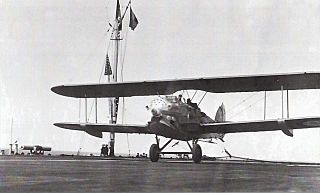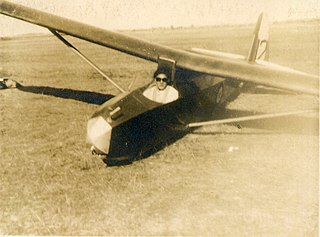Related Research Articles

The Dewoitine D.27 was a parasol monoplane fighter aircraft designed by Émile Dewoitine in 1928.

The Morane-Saulnier M.S.225 was a French fighter aircraft of the 1930s. It was produced in limited quantities to be used as a transitional aircraft between the last of the biplanes and the first monoplane fighters.

The CAMS 30E was a two-seat flying boat trainer built in France in the early 1920s. It was the first aircraft designed for CAMS by Raffaele Conflenti after he had been recruited by the company from his previous job at Società Idrovolanti Alta Italia (SIAI). It was a conventional design for the era featuring a two-bay equal-span unstaggered biplane wing cellule. The prototype was exhibited at the 1922 Salon de l'Aéronautique and evaluated the following year by the Aéronautique Maritime. The type's favourable performance led to an order of 22 machines for the French military and an export order of seven for Yugoslavia and four for Poland.

The CAMS 37 was a flying boat built in France in the mid-1920s that was originally designed for military reconnaissance, but which found use in a wide variety of roles in a large number of versions. It was the first design for Chantiers Aéro-Maritimes de la Seine (CAMS) by the company's new head designer, Maurice Hurel. The prototype was displayed at the 1926 Salon de l'Aéronautique in Paris. The prototype first flew in 1926, and after testing was ordered into service before the end of the year. It was a conventional biplane flying boat very similar to previous CAMS designs, being driven by a pusher propeller whose engine was mounted on struts in the interplane gap. The first production version was the amphibious CAMS 37A that was bought by the French Navy, the Portuguese Navy and the aeroclub of Martinique.

The Loire 46 was a French single-seater fighter aircraft of the 1930s. A high-winged monoplane designed and built by Loire Aviation, it was purchased by the French Air Force. It was also supplied to the Spanish Republican forces during the Spanish Civil War, but was almost out of service by the outbreak of World War II.

The Dewoitine D.21 was 1920s French open-cockpit, fixed-undercarriage monoplane fighter aircraft.

The Dewoitine D.19 was a fighter aircraft built in France in 1925 in response to a French Air Force solicitation.

The Levasseur PL.4, aka Levasseur Marin, was a carrier-based reconnaissance aircraft produced in France in the 1920s. It was a conventional, single-bay biplane that carried a crew of three in tandem, open cockpits. Purchased by the Aéronavale to operate from the aircraft carrier Béarn, it incorporated several safety features in case of ditching at sea. Apart from small floats attached directly to the undersides of the lower wing, the main units of the fixed, tailskid undercarriage could be jettisoned in flight, and the underside of the fuselage was given a boat-like shape and made watertight.

The Levasseur PL.6 C.2, also known as Levasseur VI C.2, was a two-seat fighter aircraft built in France in 1926 in order to meet a 1925 C.2 Service Technique de l'Aéronautique (STAé) specification,. Constructed along the same lines as Levasseur's naval aircraft of the same era, it was a conventional, single-bay biplane with seating for the pilot and tail gunner in separate, open cockpits. Flight testing of the prototype commenced in 1926, and it was exhibited at the Salon de l'Aéronautique at the end of the year.
The Dewoitine HD.730 was a prototype French reconnaissance floatplane of the 1940s. It was a single-engined, low-wing monoplane that was designed as a catapult-launched reconnaissance aircraft to operate from warships of the French Navy. Two flew in 1940, and a third aircraft was built to a modified design in 1941, but no production followed.
The Dewoitine D.750 was a prototype French twin-engined torpedo bomber. It was designed prior to the outbreak of the Second World War to operate from the aircraft carriers of the French Navy, but only a single example was completed, with development ended by France's defeat by Germany in June 1940.

The SPCA 30 was a French light bomber built by the Société Provençale de Constructions Aéronautiques (SPCA).
The Castel C.34 Condor was a French high performance sailplane. Two were built and one at least served French gliding clubs from 1935 to the outbreak of World War II in 1939.

The Dewoitine D.480 was a French single engine side-by-side sports and training aircraft built in the early 1930s. Two were completed and flew with several different radial engines. One remained active through the 1950s.
The Dewoitine D.28 was a French high-wing monoplane airliner built in the early 1930s, with a single nose-mounted engine.
The Dewoitine D.720 T3 was a French reconnaissance/cooperation aircraft built by Dewoitine in the late 1930s.
The Dewoitine P-2 was a glider built by Dewoitine in the early 1920s.
The Dewoitine P-3 was a glider designed by Emile Dewoitine and built by Constructions Aéronautiques Émile Dewoitine in the early 1920s.
The SFAN II was a French motorglider built in the mid-1930s.

The Castel C-301S was a training glider built in the early 1940s in France. It was a glider of high-wing monoplane configuration.
References
- ↑ Parmentier, Bruno (27 May 1998). "Dewoitine P-4". Aviafrance (in French). Paris. Retrieved 3 February 2019.CS1 maint: discouraged parameter (link)